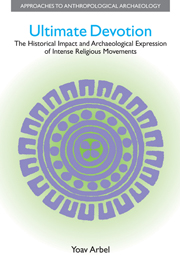 Ultimate Devotion
Ultimate Devotion from Part II
Various political and economic causes can be found at the background of the First Jewish Revolt against Rome, but the persistence, determination, and resilience of the rebels should be credited, to a large degree, to the intensification of religious beliefs and practice in Judea between the later part of the first century BCE and the first century CE. Rigorous religious faith and ritual observation, affecting virtually every aspect of life, supported the notion that God would not stand by while an armed struggle raged to rid the Holy Land from foreign oppression and religious sacrilege. The strength of this conviction helped the rebels overcome immeasurable afflictions and sustain hope to the extent that thousands fought on even after the destruction of Jerusalem and annihilation of the bulk of the Jewish force.
Several considerations make this case invaluable for the research of religious intensity and its historical impact and justify its detailed treatment in this study:
Timeline
The First Revolt took place during the mid-first century CE, nearly a thousand years earlier than the People's Crusade, sixteen centuries prior to the Pueblo Revolt, and nineteen hundred years before the Xhosa began killing their cattle and the first battle was fought under the Mahdi's banner. This timeline shows religious intensity to be no more tethered to the circumstances of specific historical periods than it is bonded to particular cultural scenes.
Jewish Identity
So far, all intense religious movements discussed here were Muslim, Christian, or nativistic reactions to Christianity.
To save this book to your Kindle, first ensure [email protected] is added to your Approved Personal Document E-mail List under your Personal Document Settings on the Manage Your Content and Devices page of your Amazon account. Then enter the ‘name’ part of your Kindle email address below. Find out more about saving to your Kindle.
Note you can select to save to either the @free.kindle.com or @kindle.com variations. ‘@free.kindle.com’ emails are free but can only be saved to your device when it is connected to wi-fi. ‘@kindle.com’ emails can be delivered even when you are not connected to wi-fi, but note that service fees apply.
Find out more about the Kindle Personal Document Service.
To save content items to your account, please confirm that you agree to abide by our usage policies. If this is the first time you use this feature, you will be asked to authorise Cambridge Core to connect with your account. Find out more about saving content to Dropbox.
To save content items to your account, please confirm that you agree to abide by our usage policies. If this is the first time you use this feature, you will be asked to authorise Cambridge Core to connect with your account. Find out more about saving content to Google Drive.